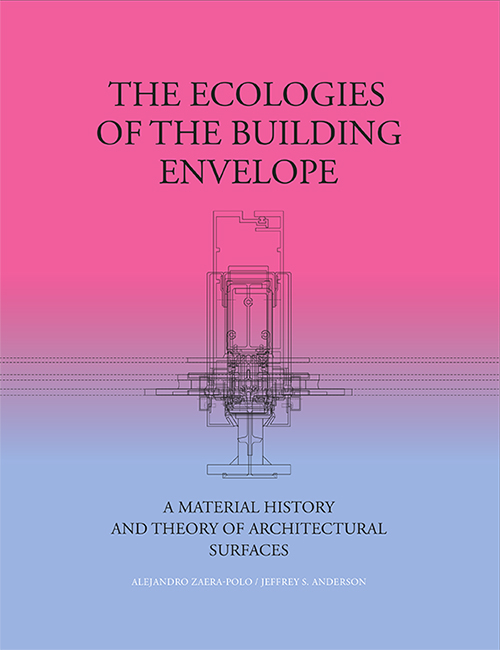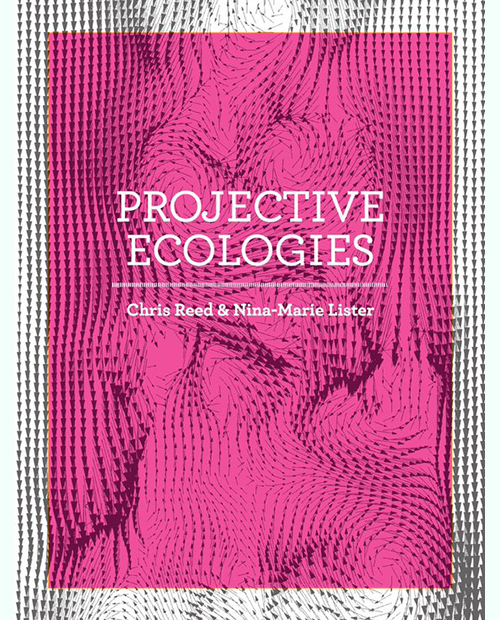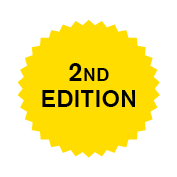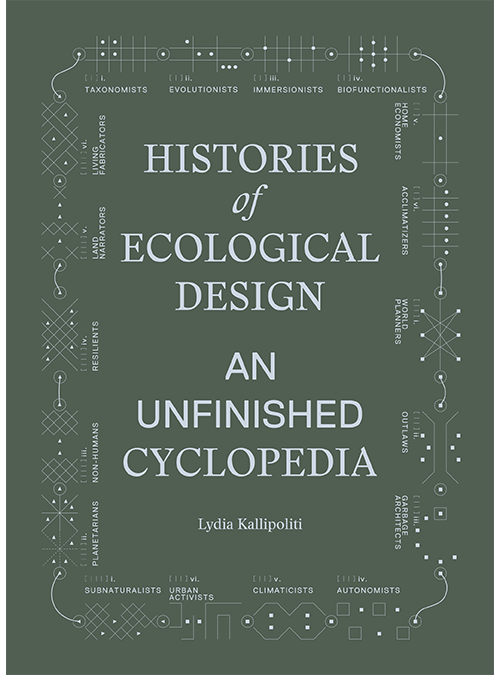
Histories of Ecological Design
35,00€
An Unfinished Cyclopedia
Lydia Kallipoliti
The term ecological design was coined in a 1996 book by Sim van der Ryn and Stewart Cowan, in which the authors argued for a seamless integration of human activities with natural processes to minimize destructive environmental impact. However, ecological design harks as far back as Ernst Haeckel’s definition of the field of ecology and Henry David Thoreau’s manual for self-reliance. Since World War II, contrary to the position of ecological design as a call to fit harmoniously within the natural world, there has been a growing interest in a form of synthetic naturalism, where the laws of nature and metabolism are displaced from the domain of wilderness to the domain of cities, buildings, and objects. With the rising awareness of disturbances in the planetary reservoir, the field of ecological design has signified not only the integration of the designed object or space in the natural world, but also the reproduction of the natural world in design principles and tools through technological mediation. Unlike van der Ryn and Cowan’s argumentation, which focused on a deep appreciation for nature’s equilibrium, ecological design might commence with the synthetic replication of natural systems.
There have been many accounts on the history of ecology and others on the migration of ecological thought to design and architecture practice. Yet, the work of a focused and expanded history of ecological design is much needed. This book will present conflicting definitions and concepts of architects and designers and the parallel histories of their intellectual positions toward environmental thought from the 19th century to today. It will showcase that ecological design starts with the reconceptualization of the world as a complex system of flows rather than a discrete compilation of objects, which visual artist and theorist György Kepes has described as one of the fundamental reorientations of the 20th century. To survey the formation of this field, the history of ecological design will be not be exclusively examined chronologically, but also in connected worldviews, each rendering evolving perceptions of nature, its relation to culture, and the occupation of the natural world by human and non-human subjects.
Description
Author: Lydia Kallipoliti
Size: 17 x 23,5 cm. / 9,25 x 6,7 in.
Pages: 280
Illustrations: Color
Cover: Softcover
Publication date: January 2024
Published by: Actar Publishers
ISBN: English 9781638400738
Price: 35€/ $39.95/ £35
Additional information
| Weight | 1 kg |
|---|---|
| Authors | Lydia Kallipoliti |
| excerpt | This book documents the intersection of architecture and design with ecology, environmental history, policy, governance and law from the 19th century to today. |
You may also like…









